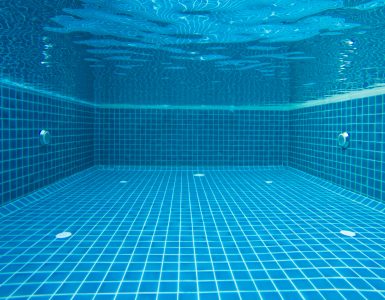Suturing Wounds on Shabbos for Medical or Aesthetic Purposes, Superfluous Cosmetic Stitches, Band Aids, Securing Dressings with Adhesive Bandages
Mishpatim 5781
This week we continue to discuss MelechesTofeir as it pertains to medical practice. Last week, we laid out some of the basic principles of the Melacha and focused on the use of labels in medical settings. This week, we will turn our attention to the most obvious instance of Tofeir, namely, suturing wounds and lacerations.
Clearly, we are not discussing sutures that are required for Pikuach Nefesh. In any situation where there is a concern of infection or the like, the wound should be closed without delay. Our discussion will focus on sutures for aesthetic purposes, such as:
- Suturing a wound that is not likely to become infected in order to avoid scarring. (Likewise, where it would be possible to clean the wound to prevent infection and wait until after Shabbos to close it).
- If the wound has been sufficiently closed to prevent infection, but additional sutures are intended to reduce or prevent scarring.
- In the event of traumatic amputation, there is sometimes a possibility of reattaching the severed limb. However, on Shabbos this would entail the performance of several Melachos, whereas if the wound was simply closed, fewer Melachos would be required.
We will also discuss whether it is permissible to enlist a non-Jew to suture a wound in cases where no Pikuach Nefesh is involved. One could argue that the person should not be considered a Choleh at all since the wound could heal on its own without surgical intervention.
A complete examination of this issue would also include a discussion of the relevant Halachos of Pikuach Nefesh. However, in this essay we will focus exclusively on those Halachos that pertain to Meleches Tofeir, particularly the following questions:
- Are the sutures considered temporary (“Tefira l’Zman”) considering that they will ultimately be removed or absorbed? Or perhaps, given that the wound will remain closed, would the sutures be considered permanent?
- Are sutures on a person’s body considered Tefira considering that the sutures do not become a single entity with the body?
Is Stitching a Wound Tefira l’Zman?
With regard to this question there are three points to bear in mind:
- The purpose of sutures is to close the wound. Even though they will ultimately be removed, once the wound has healed, they will have achieved their purpose. Therefore, there are strong grounds for considering this a permanent act of Tefira.
On the other hand, since the sutures will be removed or will dissolve, the Tefira has to be considered temporary. By contrast, when stitching an item of clothing, the stitches are designed to become a part of the garment.
- One could argue that even if the sutures will not be removed, they still do not become a single entity with the body in the way that stitches in a garment do[1]. In addition, once the wound has healed, these sutures will be redundant, whereas those in a garment forever remain the means by which the fabric is held together.
- Another important question is whether the Melacha of Tofeir applies to the human body at all. The only Melacha in which there is such a precedent is Meleches Boneh[2]. Though one is liable for the Melacha of Koseiv when writing on the body, that may be solely because the body is the surface upon which he writes – it isn’t the actual instrument of the Melacha. In the case of Tofeir, the body is not only the “location” of the Melacha, but it is actually the item that is being sutured, and there isn’t necessarily a precedent that this would be considered an act of Melacha.
The Acharonim discuss these factors at length.
Rav Shlomo Zalman Auerbach zt”l (Minchas Shlomo 2:35) holds that Tofeir does apply to the human body even though the wound will actually heal itself. Therefore, he tended to be stringent in this matter, although he did note that perhaps the two sides of a wound are not considered separated such that joining them would be considered to be Meleches Tofeir. Rav Shmuel Wosner zt”l (Shevet haLevi 9:74) raises the same issue.
However, the Tzitz Eliezer (20:18) rules that Tofeir does not apply to the human body. He proves this from the fact that the Melacha of Tzove’a does not apply to the body even though the Melacha of Koseiv does. We see that one cannot compare Melachos to each other in this regard. He also adds that suturing a wound is considered only Tefira l’Zman and is therefore permissible even if there is no danger.
Returning to the question of whether one may suture a wound for aesthetic purposes, it would seem to depend on whether the Melacha of Tofeir applies to suturing the human body and is therefore subject to the aforementioned dispute among the Poskim.
However, there is an additional scenario in which this question arises even according to the Poskim that Tofeir does apply to the human body. If a wound must be sutured due to concerns of Pikuach Nefesh, is it permissible to place additional sutures in order to prevent scarring?
At first glance, doing so would appear to be forbidden. Since (according to these Poskim) each suture is a separate violation of the Melacha of Tofeir, one could argue that a physician is only allowed to suture the wound as long as there is a risk to the patient’s health or life. Once the danger has been eliminated, he should not be allowed to place additional sutures.
However, Rav Shlomo Zalman (ibid. 34) adduces a marvelous proof from Bris Mila that this might in fact be permissible. The Halacha is that it is permissible to perform a Bris Mila on Shabbos including removing the Tzitzin – the strands of skin around the foreskin. The Gemara (Shabbos 133b) rules that this ruling even extends to Tzitzin that would not invalidate the Bris if they were not removed! Though if a Mohel forgot to remove them the Bris would be Kosher and he would not be permitted to desecrate Shabbos to do so afterwards, he may nevertheless remove these Tzitzin when he performs the Mila originally.
The explanation of this curious ruling is a matter of some debate. Why is it permissible to remove these Tzitzin on Shabbos if the Bris would be Kosher without doing so?
Some say that removing these Tzitzin is a matter of Hidur Mitzva (beautifying the Mitzva) as it ensures that the foreskin is removed in its entirety. If so, the act of removing them can be considered a part of the act of the Mitzva and therefore overrides Shabbos.
However, Rav Shlomo Zalman explained this Halacha slightly differently. He contends that, practically speaking, removing the Tzitzin during the Mila is considered part of the act of removing the foreskin. Although the removal of the foreskin and removing the Tzitzin could be considered distinct Halachically, since it is permissible to remove the foreskin, it is also permissible to remove the Tzitzin, even those that would not invalidate the Bris if they were not removed.
The same should apply in the case of suturing a wound. While the risk of infection may be minimized or nearly eliminated with just several sutures, and additional sutures are only for aesthetic reasons, it is nevertheless permissible to place additional sutures to avoid the embarrassment and distress that would result from an ugly scar. Doing so is considered to be one extended act of “Hatzalas haAdam” (saving a person’s life).[3]
Rav Shlomo Zalman suggests that another basis for leniency could be the remarkable ruling of the Magid Mishna (Hilchos Shabbos, 2:5) who permits performing Melachos for a dangerously ill patient in order to provide him with the same care he receives during the week. This even includes those things that he could reasonably do without until after Shabbos.[4] Perhaps the same could be applied in our case. The extra sutures, while not absolutely necessary from the perspective of infection prevention, would be a routine part of the treatment on a weekday and, as such, should be permissible on Shabbos too.
It is unlikely that Rav Shlomo Zalman genuinely felt that the ruling of the Magid Mishna could be applied to our case, for the Magid Mishna only permitted “unnecessary” Melachos in the case of a dangerously ill patient. In our case, as soon as the first few sutures have been placed, the patient can no longer be considered to be in any danger, thus we can no longer justify performing Melachos on his behalf.
The Sefer Hilchos Shabbos b’Shabbos[5] (2:29:36) adds that the extra sutures could be considered a Hidur Mitzva just like the removal of the Tzitzin. Stitching the wound is a fulfillment of the Mitzva of saving lives and completing the suturing ensures that the job is done expertly. It therefore should be permissible.
Rav Moshe Sternbuch Shlit”a (Teshuvos v’Hanhagos 3:103) also permits additional sutures for aesthetic purposes. He explains that in this instance, the Melacha of Tofeir is clearly not achieved by means of the thread holding the skin together, for the thread will eventually be removed. Rather, the Melacha is due to the fact that the sutures will lead to the wound closing through a natural healing process. Therefore, in this case, where the first few sutures have already laid the groundwork for the wound to heal, further suturing is not Tofeir at all!
Based on these arguments, the Sefer Ateres Shlomo (a Sefer Zikaron of Rav Shlomo Zalman) contends that even if it is possible to leave some of the sutures until Motzaei Shabbos, there is no need to do so.[6]
Rav Shlomo Zalman also rules that it is permissible to reattach an amputated limb on Shabbos even though doing so would entail a greater number of Melachos than just sewing up the wound. This is because this is the treatment which would be provided during the week and its primary objective is to prevent infection which is a matter of Pikuach Nefesh.
“Hadbaka” of a Wound
Hadbaka (joining two items with an adhesive) is forbidden on Shabbos as a Tolada of Tofeir. Last week, we noted that even those Rishonim who forbid Tefira l’Zman, are more lenient with Hadbaka l’Zman. Is it permissible to glue (e.g. using Dermabond) or apply adhesive bandages (Steri-Strips or “butterfly stitches”) to a wound on Shabbos?
Rav Shmuel Wosner zt”l (Shevet haLevi 9:74) discusses whether the application of an adhesive bandage that won’t be removed until the wound has healed is considered Tefira l’Zman. The position of Rav Nissim Karelitz zt”l is that it should not be considered Tefira l’Zman for there is no difference between an adhesive bandage and sutures which are also only removed once the wound has healed (Chut Shani 17). However, if the tape will be removed and replaced before the wound is fully healed, it would be only considered Tefira l’Zman.
Rav Shlomo Zalman Auerbach zt”l (Minchas Shlomo 34:32 and cited in Shemiras Shabbos Kehilchasa 35:25) rules that Hadbaka of a wound does not constitute Tefira at all. This appears to be a surprising ruling – after all, neither sutures nor tape remain permanently attached to the body and both enable the wound to heal. Why then should there be a distinction between Tefira and Hadbaka?
Perhaps the use of tape or a band aid does not constitute Tefira because these merely pull the two sides of the wound together and do not become a part of the body. However, Rav Shlomo Zalman was even lenient with regard to surgically gluing a wound, which does hold the skin edges together more tightly, and the distinction between these cases and Tefira is unclear.
Perhaps Rav Shlomo Zalman’s reasoning is that a Tolada of a Melacha must resemble the Av – either in the action or in its outcome. Since the act of Hadbaka is clearly dissimilar from the act of Tefira, and the outcome (in which the glue or bandage will not remain attached to the body as it will eventually fall off of its accord) is also unlike that of Tefira (where the sutures remain in place until removed), one cannot be liable for it.
Using Band Aids on Shabbos
The Or l’Tzion[7] (2:36:15) and other Poskim permit the use of band aids on Shabbos because a band aid is not meaningfully attached to the body and moreover, only remains in place temporarily. The Or l’Tzion cites the ruling of the Rema (O.C. 317:3) who permits tearing apart new pairs of shoes that have been sewn together temporarily, which demonstrates that Tefira l’Zman is not considered to be a Chibur, even though the “temporary” stitches may last for a relatively long time (from the time of their manufacture until the shoes are used). Moreover, the Gemara permits opening a sealed barrel, which also demonstrates that something that does not become a single entity is not considered a Chibur.
Rav Nissim Karelitz zt”l (Chut Shani 17:19) also permits the use of a band aid because there is no prohibition to stick something soft onto a hard surface. However, he cautions that one side of the band aid shouldn’t overlap onto the other (e.g. wrapping a band aid around a finger), for that would be attaching a soft material onto another soft material and considered Tefira. [One could argue that causing band aids to overlap is only a Melacha She’eina Tzricha l’Gufa, as the primary intent is to attach the band aid to the body and it only overlaps due to its size. In addition, they will only remain in place temporarily.]
Using an Adhesive Material to Secure a Dressing
Is it permissible to secure a dressing on Shabbos by placing an adhesive material (e.g. tape) over it? One could argue that it does not constitute Tefira l’Zman, for even after the dressing is removed the tape will remain attached to the dressing. The Shemiras Shabbos Kehilchasa (35:26) therefore rules that the use of an adhesive bandage to secure a dressing on Shabbos should be avoided. However, he does note (see footnote ibid.) that it could perhaps constitute only Tefira l’Zman as it is only intended to hold the bandage together temporarily. He also cites the Tzitz Eliezer who encourages the use of alternative methods to secure a dressing but who permits the use of an adhesive bandage by securing one end to the dressing and the other to the patient’s skin when necessary. The same conclusion is drawn by the Piskei Teshuva (328:46).
HaGaon Rav Asher Weiss Shlit”a (Minchas Asher 2:39) discusses whether the use of an adhesive bandage should be considered Tefira l’Zman since the entire dressing will be discarded after its use or if it is considered a permanent attachment since the bandage will remain adherent to the dressing.[8] Perhaps it should be considered a total attachment since the intention is that it should remain attached throughout the entire time that the bandage is going to be on the wound. Therefore, it would be better to avoid using adhesive bandages to secure dressings on Shabbos, but one may be lenient if there is no suitable alternative.
[We should add that even if a person would intend to detach the tape from the dressing when he removes the dressing, it doesn’t help render the original attachment as a Tefira l’Zman. Since dressings are not usually detached in that manner, it is assumed to be a permanent Tefira and the intention to remove it doesn’t alter that.[9]]
[1] We made a similar argument last week regarding Hadbaka.
[2] See Shabbos 95a.
[3] Rav Shlomo Zalman also relied upon the opinions that Tofeir does not apply to the human body in order to permit it.
[4] We have discussed this ruling at length in a Kuntres produced by our Beis Medrash regarding “Hutra” and “Dechuya” of the Melachos of Shabbos in cases of Pikuach Nefesh.
[5] R’ Moshe Mordechai Karp Shlit”a, pages 478-9, 2009.
[6] In other words, though usually this sort of question is dependent upon whether Shabbos is “Hutra” or “Dechuya” in cases of Pikuach Nefesh, here it would be permitted regardless.
[7] R’ Ben-Zion Abba Shaul (1924-1998), Rosh Yeshivas Porat Yosef
[8] We discussed this notion at length in last week’s essay
[9] See last week’s essay for further discussion of this question















Add comment